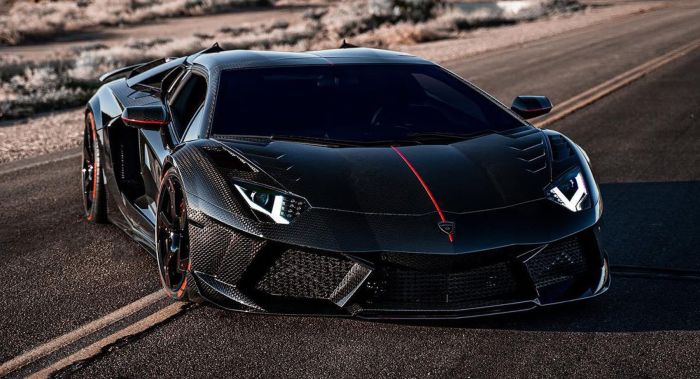Fastest four seater cars – Embark on a captivating journey into the realm of fastest four-seater cars, where speed meets precision and engineering prowess. These vehicles push the boundaries of automotive performance, offering an exhilarating blend of power, handling, and style. Dive into the intricate details that define these exceptional machines, exploring their key features, performance capabilities, and the innovative designs that set them apart.
From blistering acceleration to impeccable handling, the fastest four-seater cars represent the pinnacle of automotive engineering. Prepare to be enthralled as we delve into the world of these extraordinary vehicles, uncovering the secrets behind their remarkable speed and performance.
Key Features and Specifications
The speed of four-seater cars is determined by a combination of key features and specifications that work together to optimize performance. These include:
Engine Power and Torque
- Engine power, measured in horsepower (hp), indicates the rate at which the engine can generate work.
- Torque, measured in pound-feet (lb-ft), indicates the twisting force produced by the engine.
- A high power-to-weight ratio is crucial for achieving high speeds.
Weight
- Lighter vehicles require less power to accelerate and maintain speed.
- Manufacturers use lightweight materials such as carbon fiber and aluminum to reduce weight.
Aerodynamics
- Aerodynamic design reduces drag and improves airflow, which enhances speed.
- Features such as spoilers, diffusers, and sleek body shapes contribute to aerodynamic efficiency.
The following table compares the key specifications of some of the fastest four-seater cars:
| Model | Engine Power (hp) | Torque (lb-ft) | Weight (lbs) | 0-60 mph (s) |
|---|---|---|---|---|
| Porsche Panamera Turbo S E-Hybrid | 680 | 626 | 4,593 | 3.0 |
| BMW M5 Competition | 617 | 553 | 4,435 | 3.1 |
| Audi RS7 Sportback | 591 | 590 | 4,590 | 3.6 |
Performance and Handling
The performance and handling of fast four-seater cars are closely related and influence each other. Performance metrics such as 0-60 mph acceleration time and quarter-mile time provide an indication of a car’s ability to reach high speeds quickly.
Suspension Systems

- Advanced suspension systems, such as adaptive dampers and air suspensions, optimize handling and stability at high speeds.
- They adjust to road conditions, providing a balance between comfort and performance.
Braking Capabilities
- Powerful braking systems are essential for controlling high-speed vehicles.
- Features such as large brake discs, high-performance brake pads, and ABS (Anti-lock Braking System) ensure effective braking.
Tire Performance
- High-performance tires with low rolling resistance and high grip levels enhance acceleration and cornering.
- They provide better traction and stability at high speeds.
Design and Engineering: Fastest Four Seater Cars
The design and engineering of fast four-seater cars focus on maximizing speed and enhancing aerodynamic efficiency. Aerodynamic principles are applied to reduce drag and improve airflow.
Aerodynamic Design

- Sleek body shapes with curved surfaces and sharp angles minimize drag.
- Spoilers and diffusers generate downforce, increasing stability at high speeds.
Innovative Technologies

- Lightweight materials, such as carbon fiber and aluminum, reduce weight without compromising strength.
- Active aerodynamic systems adjust to varying driving conditions, optimizing airflow and reducing drag.
Manufacturers and Models
Several manufacturers produce high-performance four-seater cars capable of achieving impressive speeds. The following table lists some of the top models:
| Manufacturer | Model | Production Years | Engine Configuration | 0-60 mph (s) |
|---|---|---|---|---|
| Porsche | Panamera Turbo S E-Hybrid | 2021-Present | V8 Twin-Turbo Hybrid | 3.0 |
| BMW | M5 Competition | 2018-Present | V8 Twin-Turbo | 3.1 |
| Audi | RS7 Sportback | 2020-Present | V8 Twin-Turbo | 3.6 |
| Mercedes-AMG | E 63 S 4MATIC+ | 2021-Present | V8 Twin-Turbo | 3.3 |
| Maserati | Quattroporte Trofeo | 2020-Present | V8 Twin-Turbo | 4.2 |
Comparison and Contrast
Comparing and contrasting different fast four-seater cars highlights their strengths and weaknesses. The Porsche Panamera Turbo S E-Hybrid stands out with its impressive acceleration, while the BMW M5 Competition offers a balance of performance and handling.
Porsche Panamera Turbo S E-Hybrid
- Pros: Powerful hybrid powertrain, quick acceleration, advanced suspension system.
- Cons: High price, limited trunk space.
BMW M5 Competition, Fastest four seater cars
- Pros: Excellent handling, comfortable interior, practical sedan body style.
- Cons: Less powerful than the Panamera Turbo S E-Hybrid, smaller trunk space.
Market Trends and Future Outlook
The market for fast four-seater cars continues to grow as manufacturers push the boundaries of performance and technology. Advances in aerodynamics, lightweight materials, and powertrain technology are expected to shape the future of this segment.
Potential Advancements
- Electric and hybrid powertrains offer increased power and efficiency.
- Autonomous driving technologies may enhance safety and performance.
- Improved aerodynamic designs will further reduce drag and enhance speed.
FAQ Insights
What are the key factors that contribute to the speed of four-seater cars?
Engine power, torque, weight, and aerodynamics play crucial roles in determining the speed of four-seater cars.
How do performance metrics relate to handling characteristics?
Performance metrics such as 0-60 mph and quarter-mile time provide insights into the acceleration capabilities of a car, while handling characteristics encompass factors like suspension, braking, and tire performance, which influence the car’s stability and control at high speeds.
What are some innovative design elements that enhance speed in four-seater cars?
Aerodynamic principles such as sleek body lines, spoilers, and diffusers help reduce drag and improve stability at high speeds.
